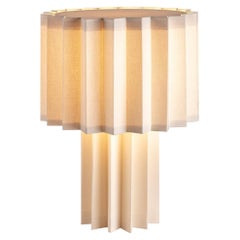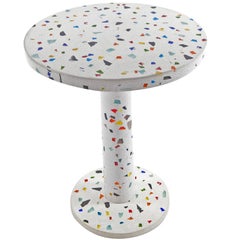Comme Des Garcons Marble Table
2010s Italian Post-Modern Center Tables
Steel
People Also Browsed
21st Century and Contemporary Spanish Minimalist Side Tables
Marble, Travertine
21st Century and Contemporary Swedish Mid-Century Modern Table Lamps
Textile
21st Century and Contemporary Portuguese Modern Coffee and Cocktail Tables
Marble
Vintage 1980s French Modern Armchairs
Steel
21st Century and Contemporary Italian Modern Cabinets
Acrylic
21st Century and Contemporary Italian Modern Bookcases
Plastic
2010s Coffee and Cocktail Tables
Fiberglass
21st Century and Contemporary Portuguese Side Tables
Marble, Brass
2010s Coffee and Cocktail Tables
Glass
Vintage 1980s Italian Post-Modern Side Tables
Laminate
21st Century and Contemporary Italian Modern Tables
Wood
21st Century and Contemporary Italian Modern Side Tables
Wood, Plastic
Vintage 1980s Italian Post-Modern Dining Room Tables
Stone, Marble
1990s Italian Modern Dining Room Tables
Laminate, Wood
21st Century and Contemporary Italian Modern Sideboards
Wood, Plastic
Vintage 1980s Italian Post-Modern Dining Room Tables
Steel
Recent Sales
Vintage 1980s Japanese Post-Modern Center Tables
Steel
Shiro Kuramata for sale on 1stDibs
Few designers have blended Minimalism and Surrealism into artistic furniture as successfully as Shiro Kuramata. His experimentation with form, function, color and motif informed cabinets, chairs and side tables that are as mystifying as they are visually striking.
Born in Tokyo in 1934, Kuruamata studied at the Kuwasawa Design School. In the 1970s and ’80s, he explored industrial materials in his designs. Inspired by Italian architect and designer Ettore Sottsass, Kuramata produced irreverent and bold work. In 1981, Kuramata joined Sottsass in his founding of the Memphis Group, named for a Bob Dylan song. The Milan-based collective aimed to turn the status quo on its head and redefine what was considered appealing in modern furniture style.
His experience with the Memphis Group led Kuramata to embrace unconventional optical effects. No piece embodies this more skillfully than the Miss Blanche chair. Crafted with transparent resin and flecked with rose-petal flecks, it gives the illusion that the sitter is floating.
The How High the Moon armchair is a prime example of his playful nature and willingness to challenge the expectations for furniture design. Including shards of colored glass in concrete surfaces, his “star piece” material was prevalent throughout his work, giving the tops of his end tables and coffee tables a brazen, gem-encrusted appearance. His daring approach to design can also be seen in pieces like his sheer glass bookcases with their seemingly fragile shelves.
Kuramata created many visual delights before his death in 1991. His work is in the collections of the Museum of Modern Art and Metropolitan Museum of Art in New York. His pieces remain highly prized by collectors and design enthusiasts worldwide.
On 1stDibs, explore a selection of vintage Shiro Kuramata seating, storage pieces, decorative objects and more.
A Close Look at post-modern Furniture
Postmodern design was a short-lived movement that manifested itself chiefly in Italy and the United States in the early 1980s. The characteristics of vintage postmodern furniture and other postmodern objects and decor for the home included loud-patterned, usually plastic surfaces; strange proportions, vibrant colors and weird angles; and a vague-at-best relationship between form and function.
ORIGINS OF POSTMODERN FURNITURE DESIGN
- Emerges during the 1960s; popularity explodes during the ’80s
- A reaction to prevailing conventions of modernism by mainly American architects
- Architect Robert Venturi critiques modern architecture in his Complexity and Contradiction in Architecture (1966)
- Theorist Charles Jencks, who championed architecture filled with allusions and cultural references, writes The Language of Post-Modern Architecture (1977)
- Italian design collective the Memphis Group, also known as Memphis Milano, meets for the first time (1980)
- Memphis collective debuts more than 50 objects and furnishings at Salone del Milano (1981)
- Interest in style declines, minimalism gains steam
CHARACTERISTICS OF POSTMODERN FURNITURE DESIGN
- Dizzying graphic patterns and an emphasis on loud, off-the-wall colors
- Use of plastic and laminates, glass, metal and marble; lacquered and painted wood
- Unconventional proportions and abundant ornamentation
- Playful nods to Art Deco and Pop art
POSTMODERN FURNITURE DESIGNERS TO KNOW
- Ettore Sottsass
- Robert Venturi
- Alessandro Mendini
- Michele de Lucchi
- Michael Graves
- Nathalie du Pasquier
VINTAGE POSTMODERN FURNITURE ON 1STDIBS
Critics derided postmodern design as a grandstanding bid for attention and nothing of consequence. Decades later, the fact that postmodernism still has the power to provoke thoughts, along with other reactions, proves they were not entirely correct.
Postmodern design began as an architectural critique. Starting in the 1960s, a small cadre of mainly American architects began to argue that modernism, once high-minded and even noble in its goals, had become stale, stagnant and blandly corporate. Later, in Milan, a cohort of creators led by Ettore Sottsass and Alessandro Mendini — a onetime mentor to Sottsass and a key figure in the Italian Radical movement — brought the discussion to bear on design.
Sottsass, an industrial designer, philosopher and provocateur, gathered a core group of young designers into a collective in 1980 they called Memphis. Members of the Memphis Group, which would come to include Martine Bedin, Michael Graves, Marco Zanini, Shiro Kuramata, Michele de Lucchi and Matteo Thun, saw design as a means of communication, and they wanted it to shout. That it did: The first Memphis collection appeared in 1981 in Milan and broke all the modernist taboos, embracing irony, kitsch, wild ornamentation and bad taste.
Memphis works remain icons of postmodernism: the Sottsass Casablanca bookcase, with its leopard-print plastic veneer; de Lucchi’s First chair, which has been described as having the look of an electronics component; Martine Bedin’s Super lamp: a pull-toy puppy on a power-cord leash. Even though it preceded the Memphis Group’s formal launch, Sottsass’s iconic Ultrafragola mirror — in its conspicuously curved plastic shell with radical pops of pink neon — proves striking in any space and embodies many of the collective’s postmodern ideals.
After the initial Memphis show caused an uproar, the postmodern movement within furniture and interior design quickly took off in America. (Memphis fell out of fashion when the Reagan era gave way to cool 1990’s minimalism.) The architect Robert Venturi had by then already begun a series of plywood chairs for Knoll Inc., with beefy, exaggerated silhouettes of traditional styles such as Queen Anne and Chippendale. In 1982, the new firm Swid Powell enlisted a group of top American architects, including Frank Gehry, Richard Meier, Stanley Tigerman and Venturi to create postmodern tableware in silver, ceramic and glass.
On 1stDibs, the vintage postmodern furniture collection includes chairs, coffee tables, sofas, decorative objects, table lamps and more.
Finding the Right center-tables for You
An alluring sitting area doesn’t have to be in the exact center of the room, but an antique or vintage center table is a great tool to partition off such an area.
By definition, a center table is a piece of furniture that is placed in the center of a room. Initially these appeared in the foyer or entryway before making their way into the living room. While one might keep seating furniture such as sofas against the walls to avoid limiting movement and closing off space, a center table in the living room can fill this central space without restricting the flow of the room.
One of the purposes of a center table is to anchor the rest of the furniture. It draws the eye to a specific area and invites guests to sit down. When thinking about how you’ll arrange your furniture, a good rule of thumb is to set tables an arm’s length away from seating. For instance, place a coffee table about 18 inches from a sofa so that it is within reach but not too close. In more modern layouts, tables are sometimes placed to the side to leave a large open area for foot traffic.
Because of its central position, a center table is one of the first things people will notice when entering a room. It’s important to consider how a center table can add to a room, as it’s a crucial element for defining the feel and theme of a room. Some center tables are mainly for decor, while others can be a great place to sit around over cocktails and hors d’oeuvres. Center tables are perfect for displaying decorative objects, floral arrangements, books or a cluster of prized antique vases given the prominent position of your table and the attention it will get.
The clean lines and organic forms that we typically associate with mid-century modern center tables means that they will bring a dose of sophistication to a space, and examples from the era can be found in square and round shapes. Wood tables were popular with furniture makers of the period, but versions in glass and marble are also widely available. Because Art Deco designers frequently incorporated ornamental embellishments such as exotic animal hides and veneers in their seating, case pieces and other furniture, your Art Deco center table will likely make a strong statement in any room. Alternatively, if you’re searching for something small and unassuming, Regency tables could be an option for your space.
Find a growing collection of antique and vintage center tables on 1stDibs today.



